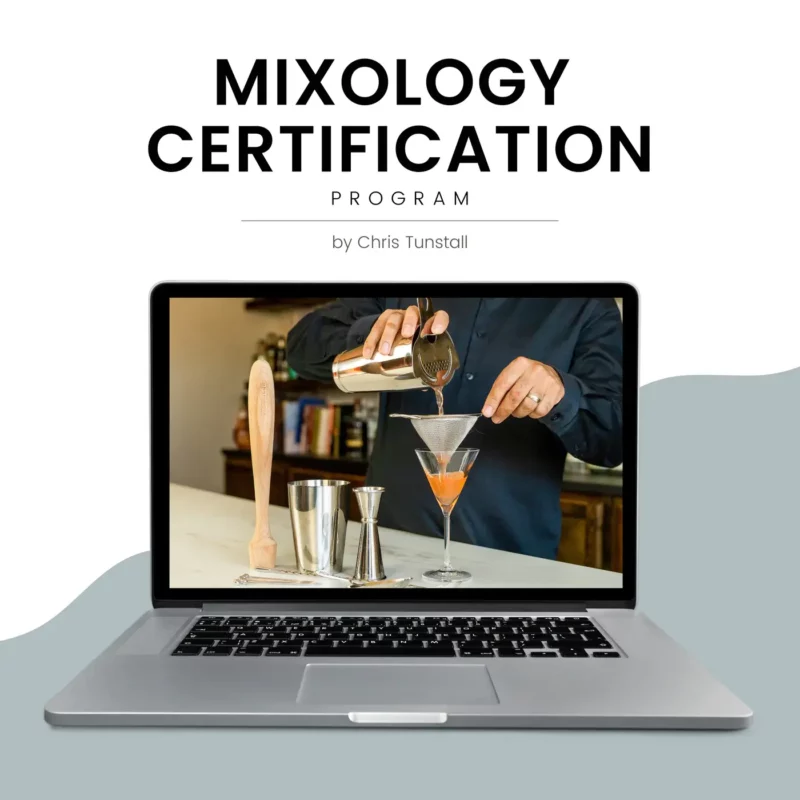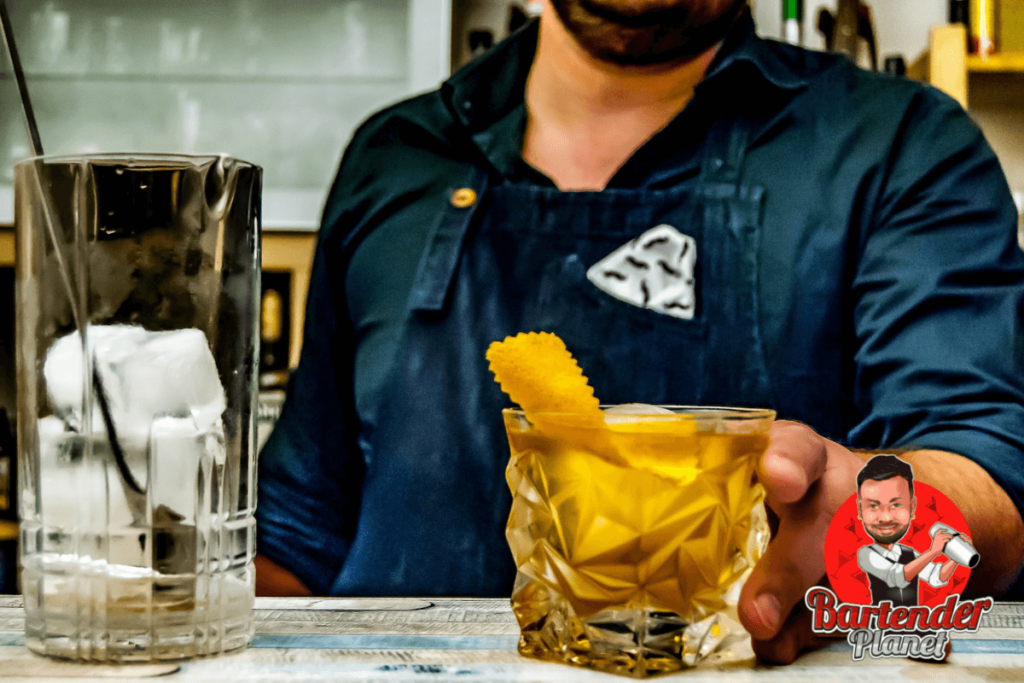Local Bartending Schools report that the US and Canadian bartending industry is a thriving sector, projecting a 5.2% CAGR from 2021-2026.
The growth in the bar industry, driven by the popularity of craft cocktails, experiential dining, and a demand for unique, high-quality experiences, is undeniable. And it’s showing no sign of slowing down.
As a bartender with over a decade of experience, I understand why many are eager to join this booming industry.
From learning bartender lingo to pouring liquor with finesse, this guide will take you through everything you need to know about how to become a bartender.
Let’s get to it…
What Does A Bartender Do?
A bartender in restaurants, bars, or clubs is the go-to pro for mixing and serving drinks. Whether directly or through bar staff, we’re all about ensuring customers have a good time.
From greeting and taking drink orders to checking IDs, bartenders keep the party going. Inventory management? Yep, that’s on the list too.
After all, a good bartender needs bartending knowledge, including terms and the knack for mixing classic cocktails.
But keep in mind that taking bartending classes often falls short of equipping you with the practical skills needed for success.
While bartending school teaches techniques and cocktail ratios, handling a busy Friday night is a different beast that only experience can tame.
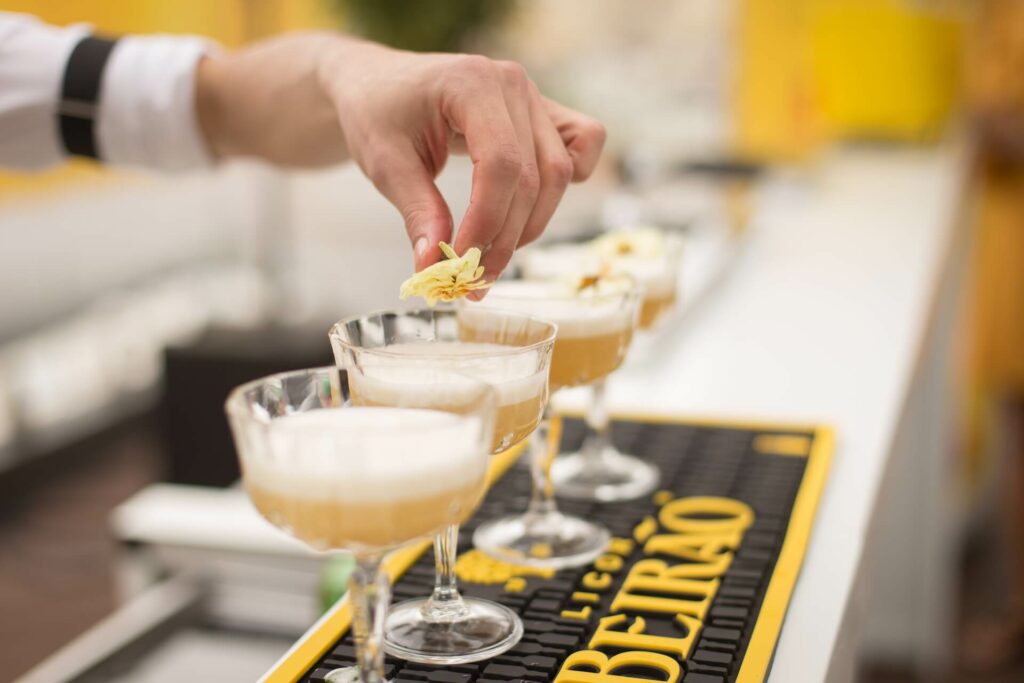
To truly learn the ropes, consider visiting bartending clubs and attending events to network with seasoned professionals and participate in hands-on workshops.
It’s a more hands-on way to gain insights beyond what bartending school provides.
A great bartender works as part of a team, navigating their way through busy nights with a free pour, catering to wait staff, and showcasing physical stamina and soft skills.
How To Become A Bartender
Earn Your High School Diploma
Starting out in bartending doesn’t necessarily require a college degree, but having a high school diploma or GED is foundational.
Age matters too, so ensure you meet the legal drinking age requirements in your state to serve alcohol – typically 16 for serving and 18 for tending bars in licensed establishments.
Consider Bartending School
While not mandatory, attending bartending school offers a crash course on how to mix drinks and safely serve alcoholic beverages.
Many hospitality schools provide bartending programs, enlightening aspiring bartenders on the fundamentals of the trade.
It’s a great starting point, so if you have the budget I do recommend investing in a bartending school as you’ll have the upper hand when applying for roles.
Although certification may not be required in every region, it’s important to familiarize yourself with local bartending regulations.
Popular choices for certification courses include TIPS and ServSafe, which are widely taken by bartenders and servers to become authorized for alcohol service.
👉 The BEST online bartending course: ABarAbove Mixology Masterclass
Gain Hands-On Experience
But completing bartending school doesn’t guarantee immediate bartender status.
Real-world experience is the linchpin. Starting as a waiter, runner, or barback, you’ll grasp the dynamics of the industry, laying the groundwork for future success.
No certification compares to real-world experience, so if you can volunteer or work part-time in a bar for the experience this is a great way to start your career.
Become A Barback
Transitioning from a waiter to a barback can fast-track your progression. Unlike a waiter, a barback is directly connected to the bartenders.
Learn the tools of the trade side by side with seasoned pros, allowing you to climb the ladder without the need for prior bartending experience.
Continuous Practice And Skill Enhancement
Once you’re adept at mixing and serving drinks, the journey doesn’t stop there. Continuous practice is vital for success and progression.
Curious about terms like “neat,” “dirty,” or “on the rocks”? Well, it’s time to learn bartending jargon.
Beyond cocktail mastery, bartenders need exceptional interpersonal skills, balancing guest interaction and order efficiency.
Multitasking is crucial, as success means smoothly handling multiple drink orders while maintaining a tidy and organized bar.
I’ve worked in many bars over the years and oftentimes when things go wrong it’s because of a lack of organization from the bartenders and their inability to multi-task.
Plus, precision is key – speed without compromising quality. To stay profitable, bartenders must control the Cost of Goods Sold (COGS), avoiding over pouring.
Despite what you may have heard, it’s not about throwing bottles around and looking cool behind the bar, it’s about the guest experience.
Great bartenders focus on the needs of the bar guests, delivering personalized service.
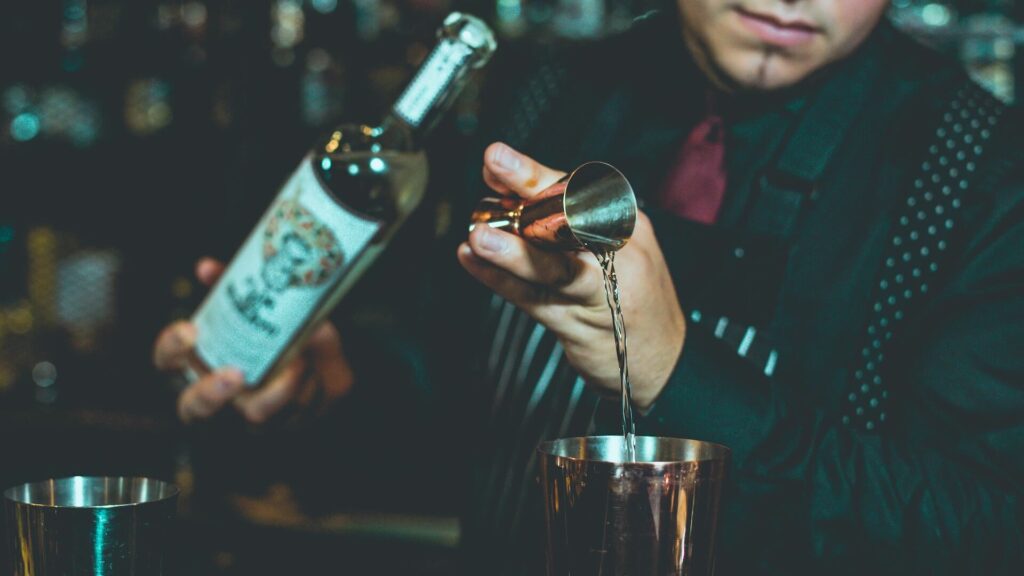
Don’t be afraid to embrace the hustle, from busy nights in a licensed establishment to mastering the bar area in full-service restaurants.
Becoming a successful bartender is an ongoing journey of skill refinement and customer delight.
How To Become A Bartender With No Experience
Breaking into the bartending industry without prior experience might seem challenging at first, but it’s a journey well within your reach with the right strategy and dedication. T
The key to it lies in a combination of self-education, practical skill development, and networking.
The first thing you’ll want to do is fully immerse yourself by learning the basics, whether this is at home or volunteering at a local bar.
This doesn’t necessarily mean formal education as there are plenty of FREE resources available online and in books that cover everything from cocktail recipes to understanding the nuances of the role.
Familiarize yourself with the classics as well as contemporary trends. This knowledge will not only prepare you for the practical aspects of the job but also show potential employers your commitment to the craft.
You’ll also want to focus on developing the soft skills that are important to become a successful bartender.
Excellent communication, a personable demeanor, and the ability to handle stressful situations without losing your cool are as important as knowing how to mix a perfect martini.
Networking is another important component. Get involved in the bartending community both online and in person.
Put yourself out there.
Social media platforms, forums, and local bartender meetups can be great places to connect with experienced bartenders and potential employers.
P.S. This doesn’t mean sitting in your local bar drinking until the sun comes up nagging the bartenders.
When I was first getting into the industry and didn’t know anything, and I mean anything about bartending, I volunteered as a barback to learn the ropes.
This was incredibly beneficial for me as I worked closely with experienced bartenders and began to learn how a bar functioned and what was expected of me.
Very quickly I began to see what the experienced bartenders were doing to succeed and what I needed to do in order to be successful in the role.
I recommend you do the same.
Whether it’s working part-time, volunteering, or attending bartending courses to scrub up on your knowledge, the more you know the better.
Lastly, be persistent and patient. Landing your first bartending job without experience won’t happen overnight, but with a dedicated approach and consistency, you’ll build the skills and relationships necessary to succeed.
We all start somewhere, but most bartenders and hiring managers will be more than willing to give a newcomer a start if they show passion and commitment.
Essential Bartending Skills
Now let’s take a look at some of the essential bartending skills you’ll need to hone if you want to make it in this industry.
Customer Service Skills
Communication And Outgoing Personality
Beyond mixing drinks, engaging with customers is the heart of the job. Develop strong communication skills and embrace an outgoing personality to make customers LOVE you and keep them going back for more.
Multitasking
Expect a whirlwind during peak hours, especially during happy hour and on weekends. Being adept at multitasking is key to keeping the flow smooth and customers satisfied.

Teamwork
Successful bartenders are team players, seamlessly coordinating with wait staff, cooks, runners, and other colleagues.
Collaboration is the secret ingredient.
Physical Stamina
Brace yourself for long hours on your feet and the occasional heavy lifting. Physical stamina is essential for navigating the bustling bar scene.
Great Memory
From complex drink orders to remembering the names of your regulars, a sharp memory is your trusty sidekick.
Personalizing the experience makes all the difference.
Mathematics
Crunching numbers swiftly becomes second nature, especially on busy nights. Quick calculations for cash and tips are part of the bartending dance.
Technical Skills
Bartender Lingo
Spend time learning bartender lingo, from “neat” to “rocks,” understanding these terms enhances your ability to communicate with coworkers.
Here are some words you’ll hear while working the bar.
- Shake and Strain: Shaking ingredients in a shaker and straining them into a glass
- Dash: A small amount of an ingredient
- Rocks (On the): Referring to a drink served with ice
- Cooler: Alcoholic-based bottled beverages with various flavors, e.g., Smirnoff Ice
- Jigger: An hour-glass shaped measuring device for accurate pouring
- Flame: Setting a drink on fire, a technique requiring skill and caution
- Bitters: Herbal alcoholic blend enhancing cocktail flavors, e.g., Angostura Bitters
- Pony: A shot equal to one ounce
- Muddle: Crushing ingredients, often done with a muddler for drinks like the Mojito
- Mixture: Non-alcoholic accompaniments like water, soda, or juice
- Rim: Coating the glass rim with salt, sugar, or spices for flavor and presentation
- Sangria: A wine-based cocktail with various ingredients and flavors
- Shake: Mixing ingredients in a shaker and then pouring back into the glass
- Burnt: A martini with Scotch, varying in recipes, some involving a drop of peaty single malt
- Chaser: Consumed quickly after a shooter or neat shot to ease its strength or mask taste
- Virgin: A non-alcoholic version of a common cocktail
- Highball: Any liquor mixed with soda, served in a tall glass
- Neat: A shot straight from the bottle without ice
- Well Drink: A drink where neither the liquor nor the mix brand is specified, like Gin & Tonic or Rum & Coke
- Blend: Mixing ingredients and ice in an electric blender, known as frozen or blended drinks
- Chill: Adding ice and water to a glass before straining a drink, commonly used for martinis
- Layer: Stacking different alcohols, with the heavier one at the bottom
- Free Pour: Making and mixing drinks without measuring devices like a jigger
- Call Drink: When a customer orders a drink specifying both the liquor and mixer, e.g., Tanqueray Ten and Tonic
- Virgin: A non-alcoholic version of a common cocktail
- Twist: The thin, long rind of a lemon peeled with a zester or lemon zester
- Shake: Mixing ingredients in a shaker and then pouring back into the glass
- Speed Rail: A stainless steel shelf holding commonly ordered liquors
- Straight up: A drink shaken and strained into a glass, similar to ‘neat’ in some areas
- Strain: Draining liquid from a shaker tin
- Toddy: A sweetened hot drink with liquor, water, and spices
- Dirty: Adding olive juice to a martini, creating a Dirty Martini
- Build: The process of making a drink, starting with ice and adding other ingredients
- Back: A small accompanying glass of water or cola, as in “Scotch on the rocks with a water back”
- Premium: Top-shelf or high-quality liquor
Tools Of The Trade
Familiarize yourself with the arsenal of bar tools – cocktail strainers, spoons, jiggers, and shakers.
Each tool plays a vital role in crafting the perfect drink.
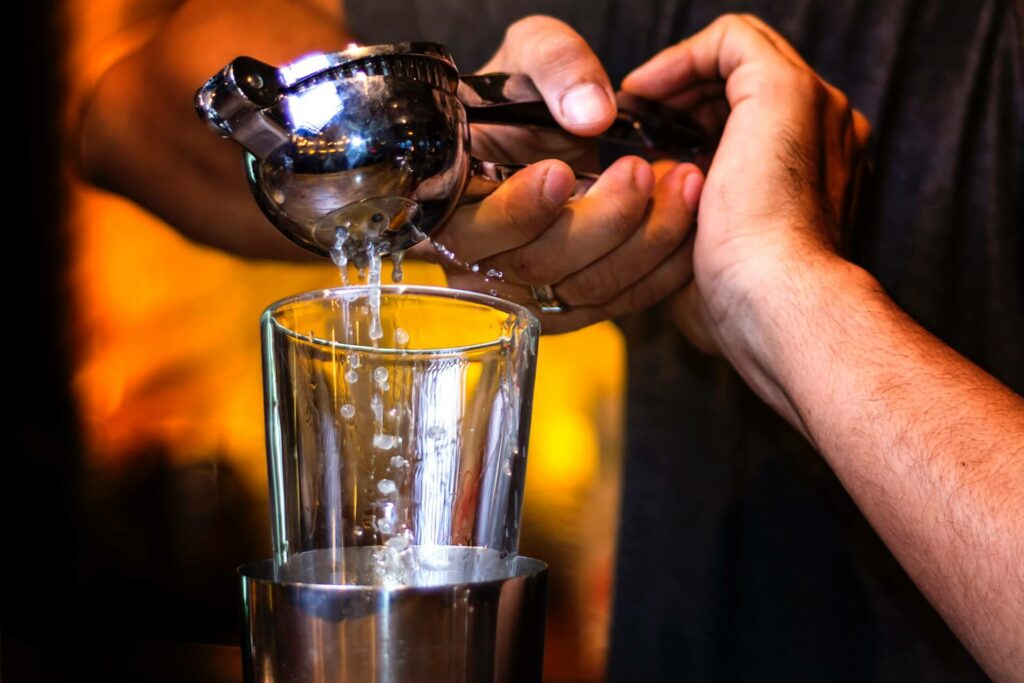
Pouring
Learn wine etiquette and the delicate dance of preventing beer foam from overflowing the glass.
Embrace the challenge of busy hours, and serve alcohol with finesse.
Essential Bar Tools For Mixing Drinks
Every bartender needs an arsenal of tools, but among the plethora available, two stand out as absolutely essential – shakers and strainers.
Cocktail Strainers
A cocktail strainer is instrumental in removing solid particles – think fruit pulp or ice – from a mixed drink prior to serving.
The top contenders in this category are the fine mesh strainer, the Hawthorne strainer, and the Julep strainer.
The Hawthorne strainer, a bar staple, features a coiled spring along with a flat metal disc. Placed over the shaker tin, it lets the liquid flow through while keeping solid particles at bay.
For spirit-forward drinks stirred in a mixing glass, the Julep strainer steps in. With a perforated metal disc, it snugly fits over the mixing glass.
And then there’s the fine strainer, a cone-like mesh tool that partners with the Hawthorne strainer for double-straining.
This dynamic duo ensures a silky-smooth cocktail, especially when dealing with muddled ingredients or egg whites.
Cocktail Shakers
When it comes to mixing drinks, cocktail shakers take the spotlight, especially for concoctions with ingredients of varying density, like muddled berries, lime juice, egg whites, or alcohol.
There are two primary types:
Cobbler Shaker
The cobbler shaker is a three-piece ensemble featuring a built-in strainer, a metal tin, and a cap.
To use it correctly, you must add ingredients to the tin, attach the cap and strainer, and shake to perfection.
Boston Shaker
The Boston shaker is a duo comprising two metal tins of varying sizes. You basically fill the smaller one with various ingredients and ice, place the larger tin on top, and give it a vigorous shake to mix the flavors.
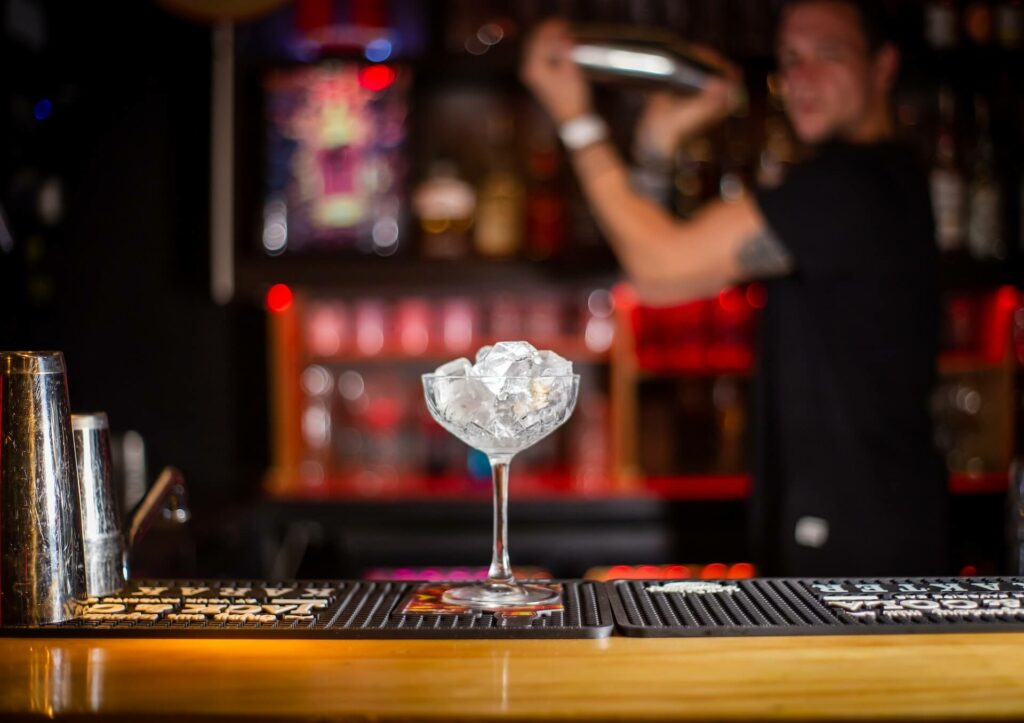
Apart from shakers and strainers, bartenders wield an array of other tools in their craft:
- Bar Spoons: Long-handled wonders for stirring cocktails and layering different alcohol levels
- Muddlers: Crush fruits, herbs, and other ingredients to unleash their flavors
- Jiggers: Small measuring cups for precise liquid measurements
- Bottle Openers, Pour Spouts, and Ice Tongs: Efficient tools make the bartender’s job smoother and more enjoyable
How Much Does A Bartender Earn In The US?
A bartender’s average salary, ranging from $8.19 to $31.15 per hour in the U.S., is influenced by factors like experience, skill, and location.
Earnings hinge on both hourly wages and tips, making busy establishments potentially more lucrative for bartenders of all skill levels.
Experience, skill level, and the popularity of the work setting all play a role in determining a bartender’s income, emphasizing the variability in earnings within this dynamic profession.
Also, tipped wages fluctuate widely, ranging from $3.52 in Michigan to $13.25 in Washington, D.C.
Still, it’s wise to stay updated by checking with the local Department of Labor for any potential changes in tipped wage rates.
Other Factors To Keep In Mind
Prioritize Physical Well-being
Bartending is a physically demanding job that requires constant movement. Trust me when I say, it’s harder than it looks. T
To prevent work-related injuries, it’s important to incorporate regular exercise, stretching, and overall body care into your routine.
Consider investing in non-slip footwear for added safety, even if not mandated by your workplace.
Prioritize intentional movement, ensuring you stay dynamic without appearing chaotic, especially during busy shifts.
Maintaining a sense of purpose in your actions is key to navigating a bustling environment.
Ensure a Safe Environment
Beyond crafting drinks and handling transactions, bartenders play a vital role in maintaining a secure and inclusive atmosphere.
Obtaining TIPS alcohol certification equips bartenders with strategies to prevent issues like intoxication, underage drinking, and drunk driving.
In the contemporary context of the #MeToo era, bartenders should be on the lookout for signs of unwanted advances.
The implementation of discrete communication methods, such as the “angel shot,” allows customers to seek assistance without drawing attention.
Exceptional customer service skills are crucial in diffusing potential conflicts and ensuring everyone feels welcome and safe.
It can be crazy out there, so learn how to maintain a safe environment for all patrons who come into your bar.
Establish Healthy Habits
While camaraderie among bar staff is common, indulging excessively in post-shift drinks may have adverse effects.
Hence, it is important to find a balance between socializing and maintaining personal well-being.
Also, it’s important to avoid falling into habits that can negatively impact health, relationships, and job performance.
Understanding where to draw the line ensures a sustainable and fulfilling lifestyle, especially considering the unconventional hours that bartenders work.
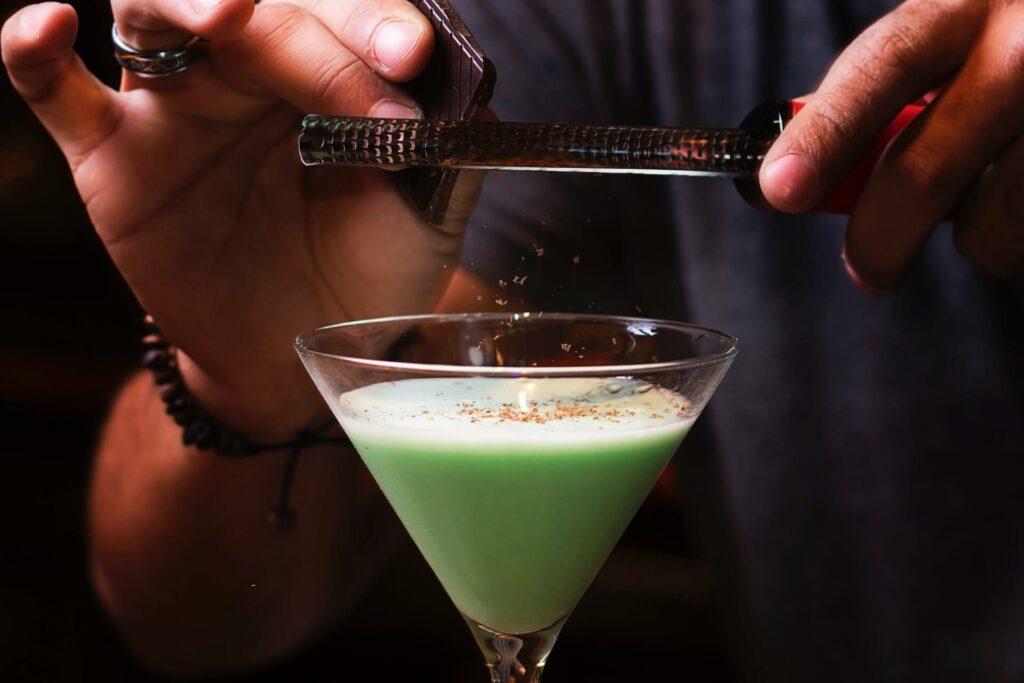
So, excelling as a bartender involves not only mastering the art of mixing drinks and serving customers but also prioritizing personal well-being, fostering a safe environment, and establishing healthy habits to navigate the unique challenges of the profession.
How To Bag Your First Bartending Job
Now that you’ve got a solid grasp of what bartending entails, familiarized yourself with state laws, and honed the necessary skills, let’s dive into the practical steps to secure that coveted bartending job.
Write A Stellar Bartender Resume
Drafting an impressive resume is your ticket to getting noticed in the competitive bartender job market.
Keep it concise, ideally one to two pages, as hiring managers often take a quick glance.
Ensure it’s free of spelling errors and accentuating experiences that showcase your bartending prowess.
Include any serving background or relevant experiences that highlight your soft skills, and don’t forget to list certifications and completed bartending courses.
Make it easy for them to reach you by providing accurate contact information.
When I was applying for bar jobs, I would always use a custom CV template to make it stand out from the crowd, and I found that running a yellow highlighter down the side of the paper would help my CV stand out.
Gain Experience Through Strategic Job Hunting
Securing your first bartending gig can be a challenge, but strategic job hunting will increase your chances.
Explore these three avenues:
Ask for Referrals
Inform friends and family about your job search, seeking potential leads through personal connections.
Drop-off Method
Personally deliver your resume to local bars or restaurants during quieter hours when managers are more receptive.
Check Job Sites
Tap into large job boards like Indeed and Craigslist, or explore specialized platforms like GoodFoodJobs.com.
Be prepared for fierce competition, as thousands of applicants frequent these sites daily. But don’t get discouraged if you don’t find a job immediately.
It takes time, patience, and a lot of grit to secure a role in the bartending industry, even if you have some experience.
Nail the Interview
Getting a positive response means it’s time for the interview – a potentially nerve-wracking experience for those new to in-person interviews.
Preparation is key:
Research
Familiarize yourself with the establishment’s brand, target customers, and the array of drinks they offer.
Study Menus
Take a look at their wine list and drink offerings to showcase your familiarity with their offerings.
Anticipate Questions
Be ready to answer common interview queries such as “Why do you want to work here?” Share your past experiences and express genuine interest in their business.
Shine In The Trial Shift
It’s standard practice to be asked for a trial shift, a golden opportunity to demonstrate your skills and eagerness to learn.
Arrive on time, well-prepared with the necessary attire, and be ready to roll up your sleeves.
Embrace The Barback Role
If your trial shift unfolds smoothly, you might start as a barback – the bartender’s right hand.
This role serves as an excellent learning ground, offering insights into the intricacies of bartending and the dynamics of running a successful bar.
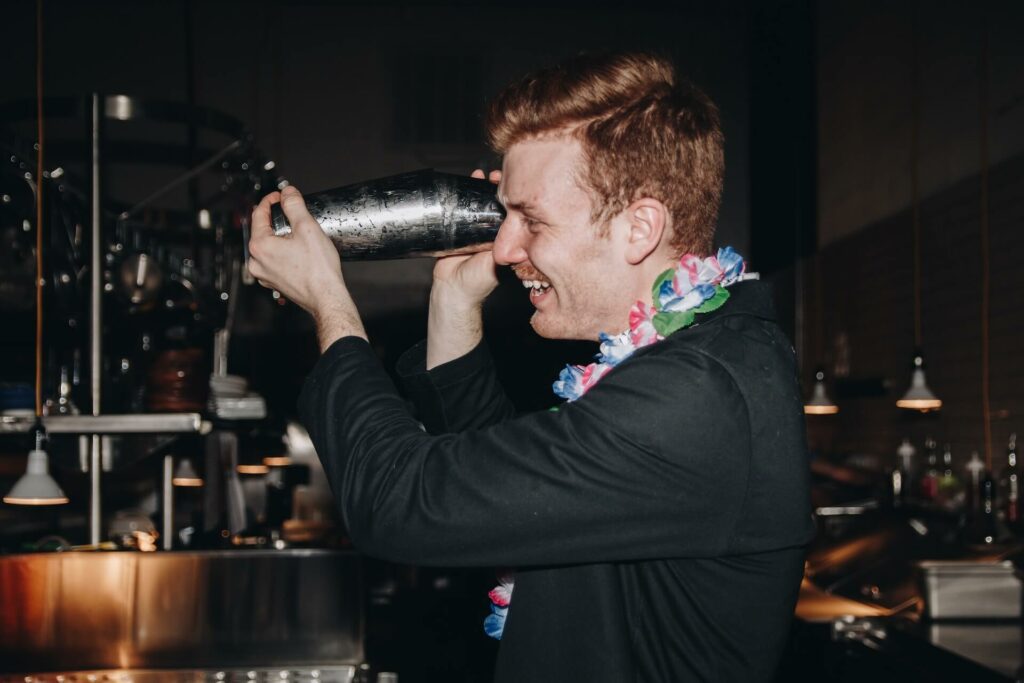
The added advantage? When the time comes for the establishment to recruit a new bartender, you’ll be the first in line, armed with intimate knowledge of their operations.
Your readiness will make you the ideal candidate when the opportunity knocks.
FAQs
What is the long-term career outlook for a bartender?
Bartenders with work experience have better prospects of securing positions at thriving establishments, allowing them to take their careers to the next level.
Opportunities may extend to managerial roles within restaurants, and some bartenders may opt to venture into entrepreneurship by establishing their own bars.
The diverse career paths available highlight the value of hands-on experience in the bartending industry and the plethora of opportunities out there.
Where do bartenders usually work, and what are their typical work hours?
Bartenders often operate during late evenings and weekends in a variety of settings such as restaurants, bars, clubs, hotels, and similar food and beverage establishments.
This profession is challenging, and the ability to perform efficiently under pressure, particularly during peak hours, to deliver excellent service to patrons is critical to success.
It ain’t easy work but it’s worth it!
Final Words
Starting your bartending journey is an exciting adventure filled with opportunities to learn, showcase your knowledge, and master the art of preparing drinks.
As you dive into this spirited profession, remember that it’s about creating unforgettable experiences for your patrons.
I wish you the very best of luck in your bartending journey and have faith that you’ll make it work in this thriving industry.
There’s plenty of room for those who are driven and keen to succeed.
Get Certified🍸
Take your mixology game to the next level! With this advanced mixology course, you’ll learn not just to follow recipes, but to create them.
HD Videos
Cheat Sheets
Earn Your Certificate
